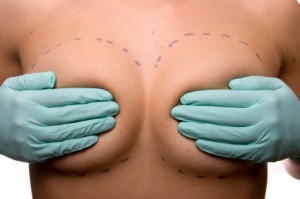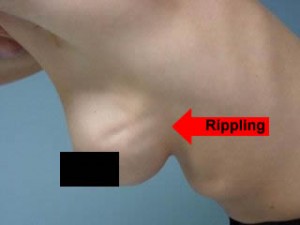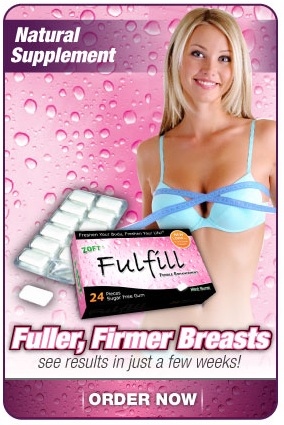Diverse Types Of Breast Surgery And Potential Problems
In contrast to natural breast enlargements to increase breast size is breast improvement, or augmentation mammaplasty, enhances the body contours of a lady who is unhappy with her chest dimensions. It could also be implemented to remedy volume loss after pregnancy, or to support balancing bust measurement asymmetries, as well as a reconstructive technique after other breast surgeries.
 The surgical procedure is accomplished on an outpatient basis. An implant is placed by way of an incision, beneath the breast tissues or underneath the muscle tissue. The cut may be done below the breast, around the nipple or within the axillary cavity. It typically takes two to 3 hours to finish the entire procedure. A breast implant is made up of an outside shell filled with saline (salt water) or silicon gel. The exterior surface area could be smooth or textured, and implants come in different forms to meet the individual woman’s needs.
The surgical procedure is accomplished on an outpatient basis. An implant is placed by way of an incision, beneath the breast tissues or underneath the muscle tissue. The cut may be done below the breast, around the nipple or within the axillary cavity. It typically takes two to 3 hours to finish the entire procedure. A breast implant is made up of an outside shell filled with saline (salt water) or silicon gel. The exterior surface area could be smooth or textured, and implants come in different forms to meet the individual woman’s needs.
The United States Food and Drug Administration (USFDA) has sanctioned both saline and silicon gel implants for bust augmentation. Reports have proven that implants will not increase the chance of breast conditions. The detection rate of breast cancer is unchanged if mammography and physical breast examination are used together.
Founded on current expert research, the implants should be problem free for many years. Nevertheless, because no breast implants have been used for an entire lifespan, it’s not possible to provide an unequivocal statement in this regard.
As is the case with all surgeries, you will find out there are certain risks which are inherent in any surgical procedure. Geometrical irregularity or thickening of scar tissues can come about which could possibly need further medical procedures to fix the condition. In unique situations uncontrolled bleeding may call for the removal of the prosthesis to control the bleeding. Infections are the next most considerable risk of chest augmentation. If an infection occurs, antibiotics alone will almost never remove the infection unless the implant is removed. It is then required to leave the implant out for a time period of about 3 months before it is safe to try a replacement. The possibility of infection is less than 0.5%. Infection is usually confined to the early post op period, on the other hand infection can turn up significantly later, the good thing is the implant can commonly be successfully replaced at a later time after the infection has fully resolved.
Loss of sensation can take place resulting in numbness or soreness, and although these symptoms are generally not long-standing or critical, they might be in some situations. Interim sensory changes are common and in most cases last two to 6 months. No studies have indicated that implants hinder breastfeeding.
Capsular Contracture
There is a natural tissue sheath that grows around the implant and sometimes this can become thick or contract creating unnatural firmness or shape of the breast area. This disorder is called “capsular contracture” and is a fairly uncommon problem which risk may be reduced by exercises. If capsular contracture develops it is possible that an open or closed capsulotomy may be mandatory.
Rippling
 Rippling, or surface irregularities over the implant that might be observed or felt, is a possible issue that comes with any kind of breast prosthesis. The extra risk of rippling is the trade-off for the increased safety of the saline filled device. Mainly because of the possible dilemma with Rippling, the placement of the saline filled implant under the muscle may aid in decreasing the chance of rippling. This could be especially legitimate for individuals who have minimal mammary tissue.
Rippling, or surface irregularities over the implant that might be observed or felt, is a possible issue that comes with any kind of breast prosthesis. The extra risk of rippling is the trade-off for the increased safety of the saline filled device. Mainly because of the possible dilemma with Rippling, the placement of the saline filled implant under the muscle may aid in decreasing the chance of rippling. This could be especially legitimate for individuals who have minimal mammary tissue.
In picking the measurements of the prosthesis, the decision should be collectively made by the patient and surgeon before surgery. Ultimately, the choice of the implant size is made by the patient, but they need to understand the benefits of a conservative selection. Capsular contracture and rippling are a great deal more prevalent with bigger implants. Post-operative loss of sensation and long-term drooping are also far more prevalent the larger the size chosen. The shape of your augmented breasts is dependent on the implant dimensions and shape together with how your chest appeared before surgery. The exact same size and shaped prosthesis on one client can look completely different on somebody else. For this reason, a woman needs to stay clear of picking a prosthesis only because of what looks good on somebody else.
The bust normally covers a muscle on the chest wall known as the pectoralis muscle. Breast implants may be positioned above or below this muscle. When implants are placed below this muscle, it is known as a sub muscular placement or a sub pectoral placement. When the prosthesis is placed above the muscle, it is known as a sub glandular or sub mammary placement, meaning that it is below the mammary gland.
A conceivable benefit of sub muscular placement is that it may permit much better mammography. It is frequently felt that there is a lot less chance of not finding a lesion on a mammography when the implant is under the muscle. The pectoralis muscle has a tendency to keep the implant against the chest wall throughout mammography. An additional benefit of sub muscular placement is that the implant is entirely underneath the breast tissue, decreasing the risk of interference with breast function.
It’s also thought that sub muscular implants are less likely to develop firmness (capsular contracture). This might be the result of pressure or internal massaging of the muscle around the implant and its related scar tissue (capsule). While this hasn’t been definitively confirmed, it’s believed that patients have much less capsular contracture when implants are placed in the sub muscular position.
The drawbacks of the sub muscular implant placement involve a more unpleasant recovery than the sub glandular procedure and lengthier healing times. Although soreness is ordinarily longer for sub mammary implants, the improvement in discomfort isn’t long lasting and most patients feel close to normal in two weeks. The most acute pain lasts for 1 week on average. Over-use of the arms and pectoralis muscles can cause the sub muscular implant to ‘ride up’ (move up the chest) in the beginning and the sub muscular implant placement does call for far more time to repair than sub mammary implants. Slight flattening below the breast should be expected at first. This requires 1 to two months on average for the breast tissue to stretch and soften so that the breast can ’round out’ on the lower half of the breast.
Incisions
There are a variety of methods in which the breast implant could possibly be inserted. An incision may be made under the breast (inframammary), in the armpit (transaxillary), or around the bottom of the areola (periareolar). The incision beneath the breast (inframammary) is probably the most prevalent, and is a favorite due to quite a few things. First, it’s the location that is concealed in a crease. Finally, inframammary scars ordinarily heal nicely since the incision method has been used for quite a few years and remains a viable option that generally has no substantial problems.
When I was first contemplating breast augmentation it was knowing these dangers that made me start thinking about natural breast enhancement alternatives.















Leave a Comment